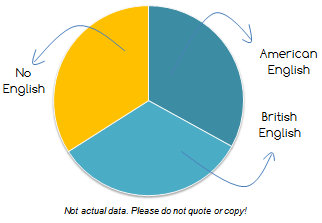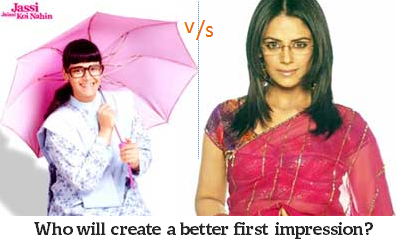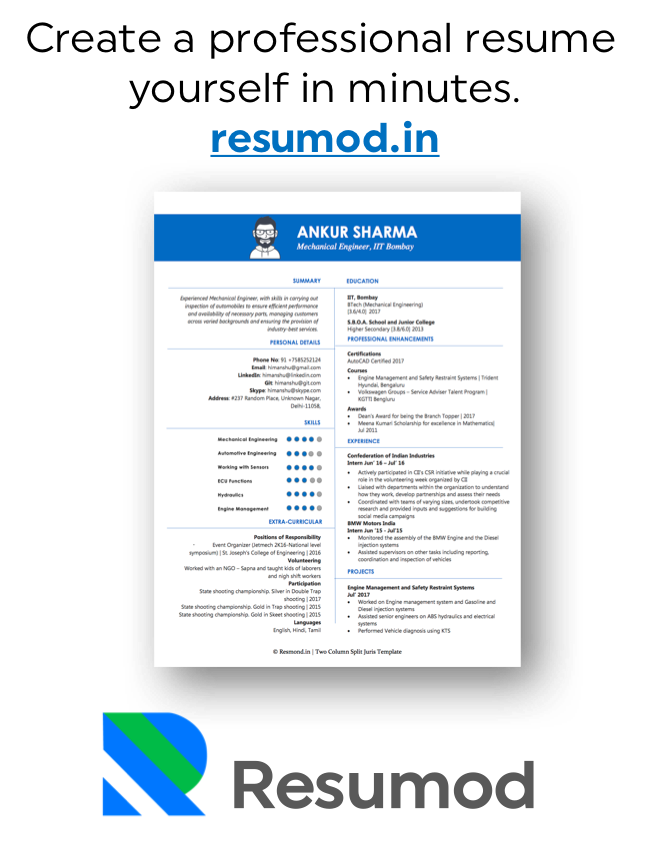I was recently approached with the idea of Video Resume implementation in India. Now this concept has gained a lot of ground in the western countries, especially the US and people are beginning to explore this new form of resume. But when it comes to India, I have my doubts. Below I have tried to put down some points which struck me while I was pondering over the thought of venturing into it. Some of them were discussed with HRs in leading organizations.
But first of all, what is a video resume? A video resume is your resume recorded on camera. Instead of your accomplishments on paper, in a video resume a candidate would dress up formally, sit/stand in front of a camera and begin a verbal essay on herself, who she is and why she is the best person for the job listing all her accomplishments, education and experiences in a 1-2 min video. You can make it as a very formal speech or you can include some parts of flash animation into it. Of course it should not be like Barney Stinson’s in How I Met Your Mother !
So, now we come to what I was talking about. What are the pros and cons of a video resume in India?
1.  First and foremost, Accent Issues. We are no Americans. And we are no British. And a resume (paper or video) will invariably be made in English. That poses the double problem of grammar and accent. Grammar can still be corrected with the use of a teleprompter behind the camera while a candidate speaks. But accent will always be a challenge for a working population where one-third [try to] speak with an American accent, one-third with a British accent and the rest do not know how to speak proper English!
First and foremost, Accent Issues. We are no Americans. And we are no British. And a resume (paper or video) will invariably be made in English. That poses the double problem of grammar and accent. Grammar can still be corrected with the use of a teleprompter behind the camera while a candidate speaks. But accent will always be a challenge for a working population where one-third [try to] speak with an American accent, one-third with a British accent and the rest do not know how to speak proper English!
This poses another hazard to the talented lot who cannot speak proper English. As a resume is the first step towards creating that valuable first impression, how about a candidate who cannot speak well? Will an HR manager hire her? Will the employer even wait for the part in the video where the candidate tells the manager about the awesome skills she possesses or the terrific projects she has done?
This will not be an issue in the western countries because most of them speak in an almost similar accent (if we look at each country individually).
2. Time and difficulty of location of data. The second but more important factor which goes against a video resume is, ‘Who has the time?’ A video resume typically varies from 1 – 3 minutes in length. A video longer than that is never going to be viewed for obvious reasons. The thing is, who even has that 1 minute?! It is a proven statistic that HR managers scan a paper resume and decide whether or not to spend the next 2 minutes reading it in the first 20-40 seconds. How do you do that in a video resume? You cannot, simply because all the information is hidden. It keeps coming to you but at intervals and then goes away into oblivion.
Again, what if an employer is specifically looking for a person with excellent academics or say, a particular skill set in Telecom Business Analytics? In a paper resume, such a filter could be applied almost instantly (by jumping to a particular section or skimming). In a video, you just need to wait and see when the candidate actually talks about this skill of his or if he even decides to mention his university grades or just skip that part altogether; which brings us to the next difficulty…
3. No Format. There can never be a standard format for a video resume. If there is, it would have destroyed the very purpose of a video resume – creative representation of data. Now, because there is no standard way of vocalizing your resume it becomes difficult to locate data in a video resume. As I said before, you got to wait till the candidate ‘decides’ to throw in the information the HR manager is looking for.

4. Beautiful vs. Ugly. It is a natural tendency for a human being to look at faces which are pleasant to see, while turning away from the ones that are ugly. Again, the average Indian’s obsession with fair skin is ubiquitous (references below). This scenario does not leave any room for an ugly faced or even a physically handicapped but extremely talented individual to publish his video resume. Because as we are talking about first impressions here, in a video resume the first impression will always be your face value (which includes how well you are dressed). Now although in an ideal situation this should never happen, but unfortunately as we are talking about practicality here, in a video resume there will almost always be biasness in favour of the fair skinned and smartly dressed. Talent and skills will only find the second row seat.

5. Who will make a video resume? Even if video resume begins to catch up to paper format, there will still be a very large number of senior and mid-level professionals who may not go with the idea. Reason – a mental block. Even if they do, is it possible to recreate the entire database of say naukri[dot]com in a video format? I don’t think so. Then there is the problem of tagging a video file. Of course there will be meta tags associated with each video, but who writes them? Candidates themselves will try to include as many tags as possible, which in many cases will be misleading for the HR managers. A third party tagging is possible though at the expense of some really good technology. But last I heard, such an attempt was made by the founder of Radbox (radbox.me), and he faced a lot of issues (with the various accents and spellings) before finally giving up the idea!
6. During the Interviews. This should not even be discussed. An interview panel will always question the prospective employee on her resume. A video resume does not make sense on the interview table. Then again, HR managers generally look up a candidate’s paper resume and make their markings and highlights before sharing it with the management. The management then decides who to call for further interaction. What happens in a video resume? 
7. Video conferencing. After all these negatives, I feel video resume does offer a good parallel approach – Interviews through video conferencing. Although this is already in place in many organizations, interviewing candidates at the first level of screening through video conferencing can save a lot of time (and time is money) spent in calling them at the company’s offices.
8. Flash resumes. Although many people carry flash based resumes these days, it poses the same hazards – of lack of time and difficulty of location of data, as video resumes. But flash resumes can come really handy to people in the technology sector, especially those involved with designing and VFX works. With a flash resume one can easily showcase her entire portfolio of work and make a really solid first impression.
At best a video resume can serve a purpose by being an add-on to the traditional (and more useful) paper resume. Overall I think if video resumes do try to make a mark in India, the reception will be lopsided. Students will definitely be excited with the idea and will go ahead and make video resumes, but professionals will remain sceptical. As for HR managers, ultimately it will be their call. If they have the patience, can work something around the data location challenge and be unbiased towards candidates who may not be that good looking, well video resumes have a fairly good scope.
References
- http://www.un.org/esa/coordination/DWDG.Fair.Lovely.SMJ.pdf
- http://www.afaqs.com/news/story.html?sid=26358



